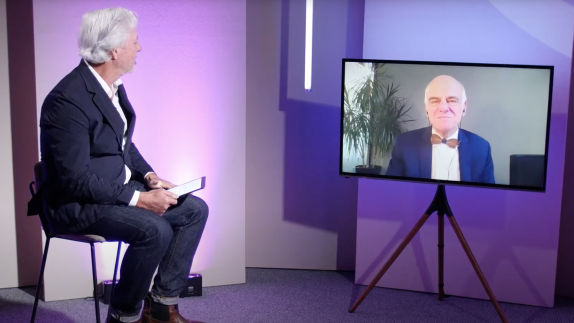The circular economy: a transformative Covid-19 recovery strategy illustrates how policymakers can help pave the way towards a low carbon, prosperous future. As part of this, ten attractive circular investment opportunities have been identified that spread across five key sectors. This page presents a full overview, describing how policymakers can pave the way.
Main takeaways
Since the onset of the Covid-19 pandemic, the calls for a wider economic transformation that is in alignment with other global challenges, have never been louder.
The circular economycircular economyA systems solution framework that tackles global challenges like climate change, biodiversity loss, waste, and pollution. It is based on three principles, driven by design: eliminate waste and pollution, circulate products and materials (at their highest value), and regenerate nature., as an instrument to decouple economic growth from resource use and environmental impact, opens up a way for such a recovery.
Policymakers have a key role to play by:
Setting a common direction of travel: a resilient recovery with the circular economy
Fostering collaboration to obtain system-level solutions
Shaping incentives to enable a circular, low-carbon economy
Unlocking circular investment opportunities to meet key public priorities (highlighting 10 circular investment opportunities)
In doing so, policymakers can help shape the future economy we need; one that is more prosperous, low-carbon, and mitigates the risk of future crises, thereby achieving the multiple public policy objectives of the 21st century.
Introduction
The world is facing an unparalleled global crisis, highlighting the shortcomings of our current system.
In the space of just a few months, the Covid-19 pandemic swept across the world restricting the movement of millions of people, impacting lives and jobs, disrupting international supply chains, and bringing global economies to a halt. In doing so, the pandemic and the lockdown measures have revealed our system’s exposure to a variety of risks, and triggered the most severe economic recession in nearly a century. The current situation has also revealed our limited ability to contain and adapt to the systemic risks posed by the pandemic within a highly interconnected world relying on rapid and frictionless global flows of people, goods, and information. More importantly, the current crisis has highlighted the shortcomings of our linear system. This is a system in which resource extraction and waste production—which are inherent to the way we make and produce goods—cause untenable environmental degradation, climate change, biodiversity loss, and pollution.
How governments act today will shape the post-Covid-19 world for generations to come.
With the Covid-19 pandemic revealing the vulnerability of global systems to protect the environment, health, and economy, many voices from governments, businesses, and civil society have been calling for a response to the devastating impacts of the pandemic that is inclusive and does not turn attention away from other global challenges. An alliance of 180 European politicians, business leaders, MEPs, and environmental activists have, for example, urged that investments are directed towards the shaping of a “new European economic model: more resilient, more protective, more sovereign, and more inclusive”. Over 100 investors, representing EUR 11.9 trillion in assets either managed or advised, have also called on European business and finance leaders to ensure a green recovery be delivered. These calls are taking place at a pivotal time, since investments and policy actions will determine the direction of economic recovery both in the short-term and the long-term. The pandemic may also be reconfiguring the roles of state and market actors for years to come.
A circular economy offers a tangible pathway towards a low-carbon and prosperous recovery.
With around USD 10 trillion in economic stimulus being unveiled by governments all around the world, there is an unprecedented opportunity to “move away from unmitigated growth at all costs and the old fossil fuel economy, towards a lasting balance between people, prosperity, and planetary boundaries.” European Commission President Ursula Von der Leyen presented such a vision for Europe by saying, We will need to ‘bounce forward’ and not ‘bounce back’. And we will need to build a resilient, green and digital Europe. At the heart of this will be our growth strategy, the European Green Deal, and the twin transition and opportunity of digitalisation and decarbonisation.” As an integral part of this European strategy, the circular economy is a framework for resilience and regeneration that delivers on multiple policy objectives. Policymakers, CEOs, and other influential individuals are mobilising businesses and governments around the world to join the journey towards achieving a resilient recovery with the circular economy in response to the economic impact of the coronavirus pandemic. The circular economy therefore remains highly relevant to keep in the sights as new sources of growth and economic renewal are considered. Achieving such a recovery will require the rethinking, resetting, and redesigning of the economy from one that is merely reactive in a time of crisis to one that is prosperous, inclusive, low-carbon, and mitigates the risk of future crises.
Building on the past ten years of research carried out on the circular economy, the Ellen MacArthur Foundation highlights how policymakers can help pave the way towards a low-carbon and prosperous future, while drawing on ten attractive circular investment opportunities.
For policymakers, embracing the roles of setting a common direction of travel, making the economics work, unlocking circular investment opportunities, and fostering collaboration will be essential in creating the enabling conditions for the recovery. As part of this, directing investment into ten circular opportunities across five key sectors of built environment, mobility, plastic packaging, fashion, and food, can help jump-start the transition in these industries while ensuring their improved future resilience. Together, these policy actions and investments can help achieve both the short- and long-term goals of the public and private sectors, while contributing to the creation of a more resilient economy and reducing the risk of future shocks.
How policymakers can help pave the way towards a low-carbon and prosperous future
To meet short- and long-term ambitions through a circular economy, policymakers have a key role to play in:
Setting a common direction of travel: a resilient recovery with the circular economy
Fostering collaboration to obtain system-level solutions
Shaping incentives to enable a circular, low-carbon economy
Unlocking circular investment opportunities to meet key public priorities
10 circular investment opportunities towards a low-carbon and prosperous future
Following the onset of the pandemic, governments all around the world have made trillions of dollars available to stimulate the economy. The question now being raised is where these funds should be best allocated. Stimulating a system shift that builds long-term resilience—working to keep economies from collapsing, preserve jobs and income, while at the same time supporting a transition to a dynamic, prosperous and low-carbon economy—is the key challenge of the moment. Some of the decisions that governments are taking now have the potential to shape a new era of development. Thus, the circular economy, as a tangible way of achieving this vision, emerges as more relevant than ever.
Building on research carried out over the past ten years on circular economy across various sectors and regions, the Ellen MacArthur Foundation has identified ten attractive circular investment opportunities which address both the short- and long-term goals of the public and private sectors. These opportunities are spread across five key sectors.
10 circular investment opportunities across five sectors
The built environment
1. Renovation and upgrade of buildings
2. Building materials reusereuseThe repeated use of a product or component for its intended purpose without significant modification. and recycling infrastructure
Mobility
3. Multimodal mobility infrastructure
4. Automotive refurbishment, remanufacturing, and repairrepairOperation by which a faulty or broken product or component is returned back to a usable state to fulfil its intended use. infrastructure
Plastic packaging
5. Innovative reuse business models for plastic packaging
6. Plastic collection, sorting, and recycling infrastructure
Fashion
7. Rental and resale business models for clothing
8. Clothing collection, sorting, and recycling infrastructure
Food
9. Tools enabling farmers to shift to regenerative agricultural production
10. Food surplus and by-product collection, redistribution, and valorisation infrastructure
Two circular investment opportunities are highlighted for each sector; the first outlining a way of optimising the use of assets, materials, and nutrients (i.e. during the use phase), and the second presenting a way for ensuring that the materials and nutrients can be circulated to maintainmaintainKeep a product in its existing state of quality, functionally and/or cosmetically, to guard against failure or decline. It is a practice that retains the highest value of a product by extending its use period. their value (i.e. in the after-use phase). Together, the two opportunities foster system effectiveness by providing added value for business, reducing exposure to resource price volatility and supply shocks, and improving societal access to high-quality, affordable, and healthy products and services. For the environment, they offer a pathway towards optimising resource use, while also designing-out waste and pollution. In addition, the role of design—as an essential prerequisite to achieving a circular economy—in combination with trends such as digitisation and decarbonisation, run as cross-cutting themes through each sector and opportunity.
Though numerous investment opportunities for enabling the creation of a circular economy across these sectors exist, the opportunities presented were selected due to their ability to offer solutions to key challenges created by the pandemic (by e.g. increasing resilience, and enabling access to vital goods); meet governmental priorities for economic recovery (e.g. stimulate innovation, create jobs, meet Sustainable Development Goals (SDGs) and climate targets); offer circular economy growth potential (driven by e.g. innovation, policies, and evolving customer preferences); and help reduce the risk of future shocks (e.g. those relating to climate change and biodiversity loss).
"The concept of the circular economy is so important, it’s a foundational blueprint. If we could get more and more of the money owners to agree that this is a good way to invest, not just for social reasons, not just for environmental reasons, but for investment reasons, performance reasons”
- Larry Fink, CEO, BlackRock













